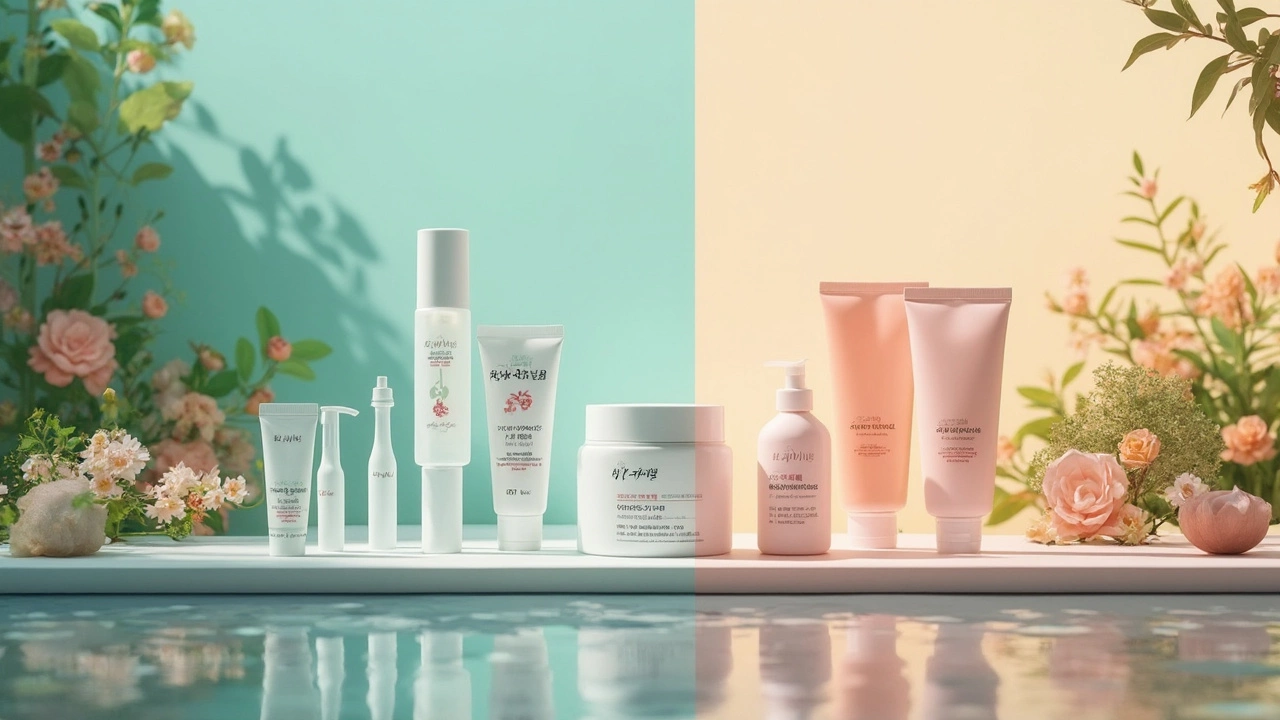Japanese Skincare: Simple Secrets for Glowing Skin
If you’ve ever wondered why Japanese models look fresh even after a long day, the answer is in their skincare habits. It’s not magic – it’s a set of easy steps that anyone can copy. Below you’ll find the core routine, the products that actually deliver, and a few modern twists that keep the tradition fresh.
Core Steps of a Japanese Skincare Routine
Japanese routines are built around a few basic ideas: protect, hydrate, and balance. First, always start with a gentle cleanser that removes makeup and pollution without stripping the skin’s natural oils. A light, water‑based wash works best for most types. Next comes the iconic double‑cleanse – an oil‑based cleanser to dissolve stubborn sunscreen or foundation, followed by the water‑based one for a squeaky‑clean feel.
After cleansing, the focus shifts to hydration. A thin layer of toner (often called a “skin‑flatter”) restores pH and preps the skin for the next steps. Japanese toners are usually watery, sometimes infused with rice water, green tea, or fermented ingredients that calm irritation.
Then comes the serum or essence. This is the heart of the routine – a concentrated boost of active ingredients. Look for products with hyaluronic acid, niacinamide, or fermented yeast to improve texture and brighten dull spots. Apply a few drops and press gently; the skin loves that pat‑in motion.
Finish with a lightweight moisturizer that locks in everything you just applied. Japanese moisturizers often have a gel‑cream texture that feels like a thin veil but provides long‑lasting hydration. If you’re heading out, add a broad‑spectrum sunscreen with at least SPF 30 – Japanese brands love mineral formulas that leave no white cast.
Everyday Products That Actually Work
Now that you know the steps, let’s talk about real‑world products you can find at most beauty stores or online. A Japanese oil cleanser with rice bran oil melts makeup effortlessly. Pair it with a foaming cleanser that contains sakura extract for a subtle scent and extra soothing power.
For toners, choose a low‑alcohol formula that contains pre‑biotic ingredients. These help the skin’s microbiome stay balanced, which means fewer breakouts and less redness. A popular pick is a fermented rice water toner – it’s cheap, gentle, and gives that dewy glow.
Essences are where the magic really happens. Look for a bottle that lists “fermented yeast” near the top of the ingredients list. One pump a day is enough to see smoother texture within a couple of weeks.
When it comes to moisturizers, a gel‑cream with ceramides and squalane provides barrier support without feeling heavy. If you have oily skin, a light gel with hyaluronic acid will keep you hydrated while staying matte.
And don’t forget the sunscreen. A mineral sunscreen with zinc oxide and titanium dioxide protects without irritating sensitive skin. Apply it every morning, even on cloudy days – the UV rays are still there.
Putting these pieces together doesn’t take hours. Most people finish in under ten minutes, and the skin rewards you with a calm, luminous finish that lasts all day. Try the routine for a month, and you’ll notice less oil, fewer red patches, and a brighter complexion.
Japanese skincare is all about consistency and respect for the skin’s natural balance. You don’t need fancy gadgets or a long list of steps – just clean, hydrate, protect, and enjoy the simple pleasure of healthy skin.
60 Second Japanese Anti-Aging Ritual: Quick Organic Skincare That Works
Curious how Japanese women keep their skin looking young and radiant? The secret might be this 60 second ritual. Learn how you can use natural, organic ingredients and a fast facial massage trick that’s easy to add to your daily routine. The article explains what makes this method unique and why it works even if you’re super busy. Find out tips and tweaks to get the most glowing results without expensive products or treatments.
Korean vs. Japanese Skincare: Which is Your Best Match?
When it comes to skincare, Korean and Japanese routines are two of the most popular and trusted worldwide. Both offer unique approaches and products, which can make choosing between them a bit tricky. This article dives into the differences, similarities, and benefits of each, helping readers to figure out which suits their needs best. It also provides tips and facts to guide you in your skincare journey. Discover how these two skincare giants stack up against each other and find your perfect match.

